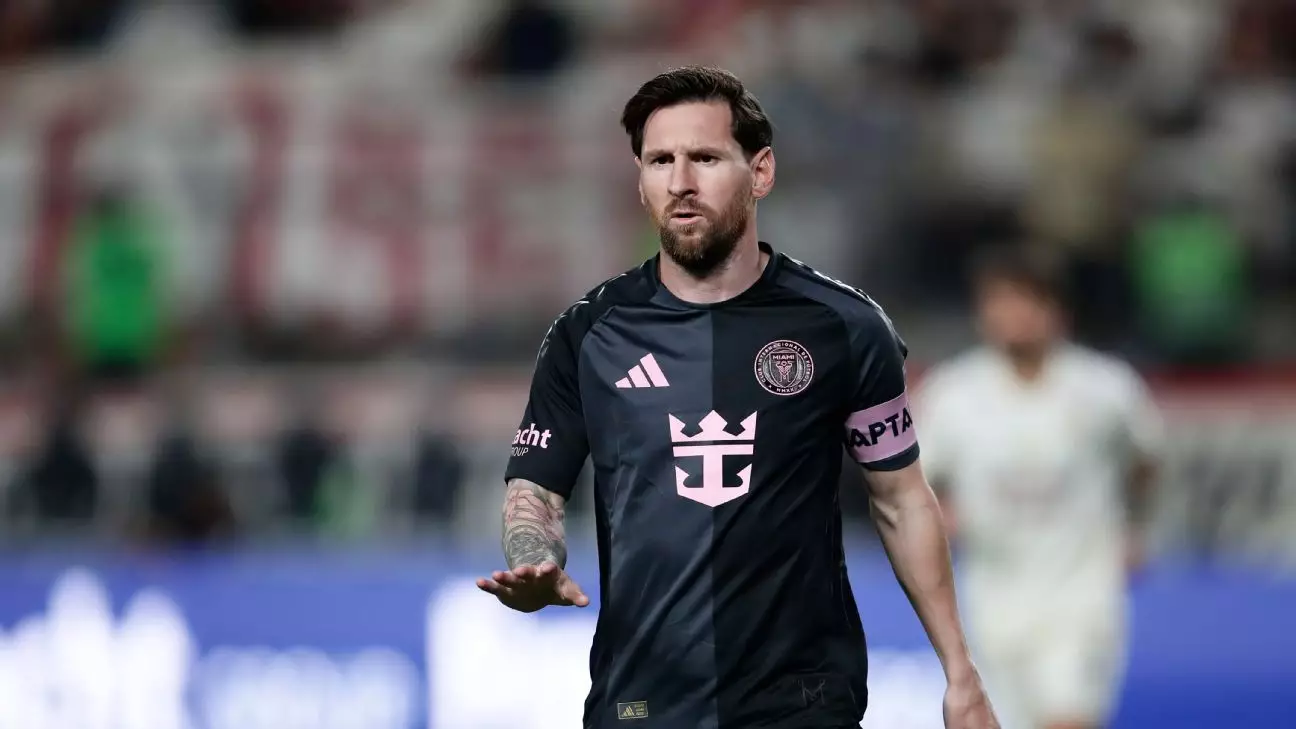Lionel Messi, the iconic footballer whose very name reverberates through the world of sports, stands on a thrilling precipice as he reflects on his journey with Inter Miami CF. After his arrival in the summer of 2023, he has witnessed a remarkable evolution within Major League Soccer (MLS). The narrative is not just one of individual brilliance but of a league undergoing a renaissance. Recent interviews reveal that Messi believes this season’s competition is sharper than any previous one during his time in the United States. Such insights from a player of his stature demand attention—they illuminate a path of growth that warrants both praise and examination.
Messi highlights the influx of young, foreign talent across MLS as a cornerstone of its development. The arrival of new players has invigorated the competition; every match now bears the imprint of an unpredictable and electrifying energy. “It may not seem like it,” he said, “but teams run a lot.” His comments unfurl a vivid picture: young athletes with raw energy challenge old paradigms, creating a dynamic on-field experience that is as physical as it is strategic. This infusion of talent is not merely a numerical increase; it represents a shift in the philosophy of American soccer, echoing global standards of play.
Reinforcements on the Horizon
Inter Miami’s proactive strategy in the transfer market underscores this transformation. With the club securing young talents from South America and bolstering their roster with established stars like Luis Suárez and Sergio Busquets, they are positioning themselves as formidable contenders. Yet, this arms race is not confined to Miami alone. The broader MLS landscape is echoing similar ambitions. Teams are forging alliances with international players, exemplified by clubs like San Diego FC and Charlotte FC, which have welcomed global sensations like Hirving Lozano and Wilfried Zaha respectively.
This bustling wave of activity in MLS raises questions about the future of American soccer at large. We find ourselves in an era where international superstars aren’t merely an addition, but an expectation. Soccer fans and analysts alike must ponder: Are we witnessing the burgeoning of a legitimate competitor to European leagues? Messi’s observations suggest so. The elevation of competition dynamics will invariably lead to a more entertaining and skillful league, one that might soon attract even more significant talent.
Barriers to Progress
However, Messi’s critical lens does not shy away from addressing challenges that still impede progress. He alludes to the roster restrictions that tether player acquisitions, emphasizing that a more liberal policy could exponentially enhance league growth. “There are many restrictions,” he stated, advocating a reevaluation of current structures to facilitate a broader inclusion of foreign talents. Such barriers not only limit player movement but also cap the developmental potential for budding American players seeking to refine their skills against elite competition.
Former Inter Miami head coach Gerardo Martino echoed similar sentiments when discussing the competitive disadvantage presented by roster limitations. His remarks remind us that if MLS aims to stand toe-to-toe with historic leagues, it must first confront the existing procedural confines—hurdles that, if unaddressed, could stall the league’s upward trajectory.
Messi’s Resounding Impact
In spite of these hurdles, Messi’s time at Inter Miami paints a picture of resilience and growth. Currently navigating an intense league as they battle for top spots in both the MLS and Concacaf Champions Cup, the team embodies the relentless pursuit of excellence. As they sit solidly in the Eastern Conference playoff picture, their journey serves as a microcosm of the league itself—an inspiring testament to potential and possibility.
Messi himself seems to revel in the environment, reveling in the travel and competition, which amplifies his passion for the game. “It’s a league to enjoy,” he exclaimed, underscoring an ethos that is both personal and collective. The United States, with all its fervent soccer fans, is not just a backdrop; it has become an arena for Messi’s storied career to flourish.
As Inter Miami gears up for pivotal matches, including a crucial face-off against the Columbus Crew, the stakes remain high. The intensity of competition is now matched with a vision for the future—a future where Major League Soccer could very well transcend its nascent status on the world stage and become a powerhouse of global soccer.

Leave a Reply